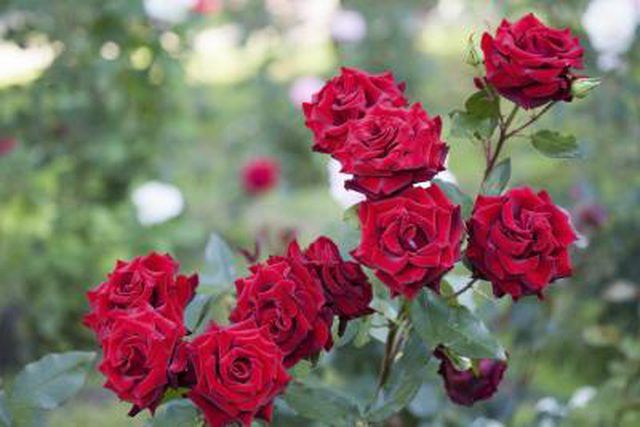Bulbs
Flower Basics
Flower Beds & Specialty Gardens
Flower Garden
Garden Furniture
Garden Gnomes
Garden Seeds
Garden Sheds
Garden Statues
Garden Tools & Supplies
Gardening Basics
Green & Organic
Groundcovers & Vines
Growing Annuals
Growing Basil
Growing Beans
Growing Berries
Growing Blueberries
Growing Cactus
Growing Corn
Growing Cotton
Growing Edibles
Growing Flowers
Growing Garlic
Growing Grapes
Growing Grass
Growing Herbs
Growing Jasmine
Growing Mint
Growing Mushrooms
Orchids
Growing Peanuts
Growing Perennials
Growing Plants
Growing Rosemary
Growing Roses
Growing Strawberries
Growing Sunflowers
Growing Thyme
Growing Tomatoes
Growing Tulips
Growing Vegetables
Herb Basics
Herb Garden
Indoor Growing
Landscaping Basics
Landscaping Patios
Landscaping Plants
Landscaping Shrubs
Landscaping Trees
Landscaping Walks & Pathways
Lawn Basics
Lawn Maintenance
Lawn Mowers
Lawn Ornaments
Lawn Planting
Lawn Tools
Outdoor Growing
Overall Landscape Planning
Pests, Weeds & Problems
Plant Basics
Rock Garden
Rose Garden
Shrubs
Soil
Specialty Gardens
Trees
Vegetable Garden
Yard Maintenance
What Causes Holes in the Leaves of Rose Bushes?
What Causes Holes in the Leaves of Rose Bushes?. It's alarming when your rose bushes (Rosa spp.) develop ragged-looking leaves. Leaf-chewing insects can affect not only the appearance but the health of the rose. Be watchful to find damage early and to locate the responsible insect, looking underneath leaves and checking at different times. After...

It's alarming when your rose bushes (Rosa spp.) develop ragged-looking leaves. Leaf-chewing insects can affect not only the appearance but the health of the rose. Be watchful to find damage early and to locate the responsible insect, looking underneath leaves and checking at different times. After pest identification, avoid pesticides for control if possible, since beneficial insects shelter in rose foliage. Hybrid tea roses (Rosa x hybrida) grow in U.S. Department of Agriculture plant hardiness zones 4 through 9, although cultivars can vary.
Leafcutter Bees
Leafcutter bees make conspicuous holes in rose leaves. About honeybee size, nonaggressive leafcutter bees are gray and fast-flying. A female bee lands on a leaf edge, slices off a semicircular leaf piece, rolls it up and flies off with it. Leaf pieces line her nest in a hollow stem. Leafcutter bees are valuable pollinators and shouldn't be harmed. If your roses are in danger of defoliation, exclude the bees with cheesecloth or tulle draped over the rose bushes.
Sawfly Larvae
Commonly called rose slugs, these pests are immature forms of a wasp relative that doesn't sting. One species looks wet and shiny, while others resemble green caterpillars. Young larvae skeletonize leaves, leaving veins behind as they eat the soft tissues. Older larvae eat holes in the leaves. Look for them on leaf undersides mostly in the spring. Pick them off or knock them loose with a stick or a stream of water. They can't climb back onto the plant.
Moth Larvae
Although caterpillars aren't common pests of roses, some moth larvae eat rose leaves, including the eastern tent caterpillar, corn earworm, inchworms, the stinging rose caterpillar and the puss caterpillar. You can hand-pick caterpillars except for the stinging rose caterpillar and the puss caterpillar, which have toxic hairs and shouldn't be handled. Leafroller caterpillars eat young rose leaves and shelter in rolled-up older leaves fastened together with silk. Natural parasites and predators usually keep leafrollers in check.
Beetle Types
In addition to eating leaves, beetles also eat rose flowers. The rose chafer, a tan beetle about 3/8-inch long, feeds for about three to four weeks in spring. Pick beetles off the foliage or temporarily put tulle over valued rose bushes. The fuller rose beetle eats at night. This brown wingless weevil chews jagged holes and generally doesn't do lasting harm. Put a 6-inch-wide band of sticky tape around the rose's trunk to keep them from the leaves. Colored metallic copper and green, 1/2-inch-long Japanese beetles can be plentiful in summer. Handpick them, dropping them into soapy water to drown. Japanese beetle traps can lower populations, but they should be at least 50 feet away from the roses.
Low-Toxicity Treatment
For heavy infestations of all these pests except for leafcutter bees, try a control agent with low biotoxicity such as neem oil, also called azadiractin. Wear gloves, long pants, long sleeves and shoes and socks. Mix 2 tablespoons of 70 percent neem oil with a gallon of water. Spray it on leaves and stems, including leaf undersides, wetting all surfaces thoroughly. Shake the container frequently to mix the spray, and use freshly prepared neem oil. Don't spray heat-stressed plants or young growth. Apply during the early morning or late evening every seven days until symptoms disappear, and then apply every 14 days.